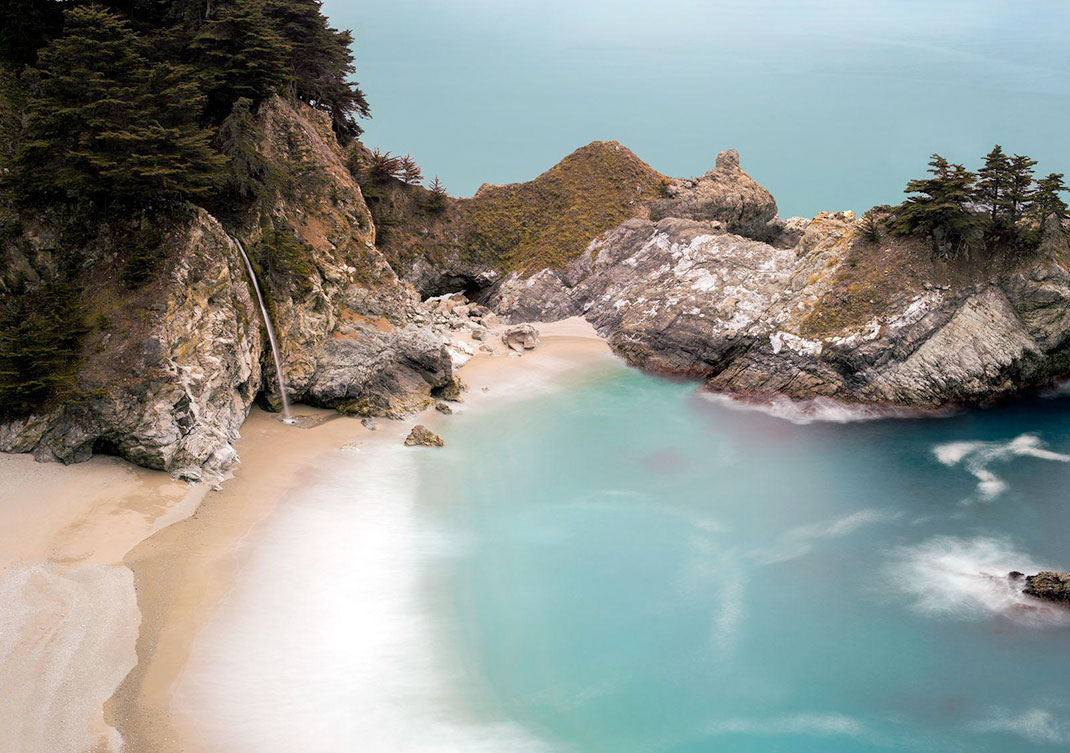

A 24-105mm or similar lens is about right. I can quickly compose with different focal lengths, without having to change lenses or cameras. That’s why I like zoom lenses for aerial photography. If you don’t act quickly, you’ll miss the shot. When flying 100+ mph at low altitude, the landscape passes very quickly. So a take advantage of the extra shutter speed provided by your fastest f-stop. The depth of field is not a problem from a 1000 or meters from your subject.

Everything you are seeing from the air will be in focus when the lens is set to infinity, so don’t even bother with autofocus. I often shoot manual focus from the air and pre-set my focus point to infinity. I tuck my arms against my sides and hold the lens an inch or so away from the window glass. If you touch the plane, the vibrations will be transmitted straight into your camera. Hold your camera and elbows free of the window. Don’t brace your lens or arms on the plane.I like anything over 1/1000th of a second. Here are four things to help you improve sharpness: Small, single-engine planes, however, are a different story and can be an amazing platform for creative aerial photography.Īttaining a sharp image is a major challenge because airplanes are vibration-filled nightmares. Except for the occasional phone snap, I rarely bother with it anymore. Plus the perpetually fogged or scratched windows will destroy your image quality. There’s an airplane wing in the foreground with some sunset or mountain beyond. Sure, I’ve made some images from jet windows, but they inevitably follow the same formula. While big passenger jets are great for getting us from one place to another quickly, they are lousy photography platforms. Here are a few tips to improve your aerial photography images, whether you are shooting from a plane or using a remote drone. The two methods, planes and drones, require very different ways of thinking about image-making. While both techniques get me the elevation I want, the photographic experience is very, very different. The second way I frequently use to access an aerial perspective is by flying drones. While only occasionally do I fly specifically to make aerial images, I find simply going to and from different locations provides ample opportunity. My life in Alaska is full of flights in bush planes to remote places in the state. I’m fortunate to spend a lot of time in small planes. Even familiar scenes and objects can make compelling photographic subjects if we are willing to explore them from new angles.Īerial photography is one of my favorite ways to provide that novel perspective.

That might be places your viewers have not visited, impossible ways of seeing to the human eye such as long exposures and night photography, but most often this novelty comes in the form of a different perspective. Contact us for more information.At its heart, good photography is about showing people views of the world they would not otherwise see. Your custom aerial photo requirements can also be met, including photos for large or irregularly shaped sites, such as roadways, railroad lines and utility corridors. Recent acquisitions include Aerial Viewpoint photos that date back to the 1930s and offer unprecedented quality for New Jersey, New York and more. New additions to the collection are constantly made available, along with continuous updates to improve the quality of the existing collection. Historical aerial photos from EDR have been geo-referenced to make locating your target property easier than ever. The photos can be reviewed in traditional PDF format or, when purchased with an EDR Package or Radius Map, through EDR Lightbox. Our historical aerial packages include digitally reproduced photos from each decade, typically beginning in the 1930s, ’40s or ’50s and continuing through the 1990s or 2000s. When you access the largest collection of historical aerial photos in the U.S., you’ll find the best coverage from a single search.


 0 kommentar(er)
0 kommentar(er)
